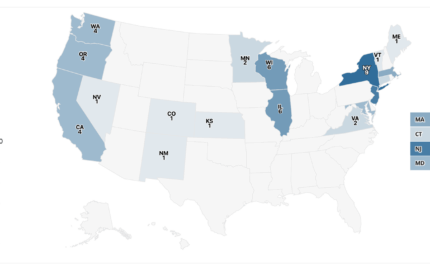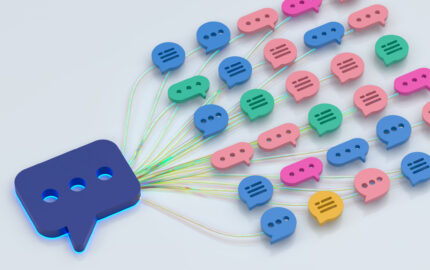As a journalist, I’ve written dozens of grant applications for stories and projects I wanted to pursue. I’ve been pretty effective, with perhaps a 25% success rate, if you look at the number of grants I received compared with the applications I submitted. My track record has improved as I build on what seems to work.
But nothing taught me more about writing a winning grant application than reading 1,334 applications for media grants submitted for the Greater Good Science Center (GGSC) initiative on the science of love. As director of the love project, I personally screened every single application and I steered the review process, which involved 12 internal and 25 external reviewers working from March through June.
We awarded 23 grants of between $5,000 and $50,000 each for projects on love. We’ll also support the cohort of grantees from September 2025 through March 2027 with guidance from scientific advisors and shared learning among grantees in quarterly Zoom calls and two in-person events at the University of California, Berkeley, where GGSC is based.
The next grant application I write will be dramatically stronger because of this experience. I also came away inspired and reassured by the hundreds of creative nonfiction storytellers who are working on dynamic, original projects across North America, all aimed at increasing our connection to one another and making society more loving. To help other journalists benefit from my new insight, here are my top takeaways from the process.
Lots of people use AI — and it’s a mistake
Reading through the first dozen grant applications in mid-March surprised me in several ways. First, I felt puzzled by the abundance of applications that didn’t seem to have a point. Each individual sentence made sense, but I couldn’t grasp the intention of the writer. What exactly did they plan to create in the project? What was their reporting plan and anticipated storyline? The applications didn’t seem to have any soul.
Second, the formatting of many applications looked weird and included excessive all-caps headers that exactly matched headers in other applications submitted by completely unrelated journalists and media producers. The words echoed phrases from the application guidelines in our request for proposals. And there were odd line breaks and spacing.
I copy-pasted a few of these soulless applications into an online AI detector and learned what you may already have guessed: they were written by artificial intelligence. That’s why there didn’t seem to be a point to the project — no human brain had crafted the words to communicate a plan or intention. Not wanting to waste my time puzzling through hundreds of AI-generated applications, we screened all 1,334 applications with an AI detector and found that more than 200 applications contained over 50 percent AI-generated content. We’re not talking about using ChatGPT to brainstorm a few ideas or tweak language; these were applicants who pulled a result from AI and put it directly into the grant application without much human thought or editing.
This holds a lesson for grant programs as well as for applicants. Program directors should expect that many applicants plan to lean on AI, and create explicit policies about whether and how AI may be used as part of the application process. Because we hadn’t anticipated AI being used to write applications, I ended up reading all of the submissions — whether or not they contained AI — but the AI screening helped me more quickly sort applications to send to reviewers and prioritize where to spend my time.
Reading the grant instructions is crucial
The GGSC editorial team spent several months writing a 12-page request for proposals that outlined the grant process, the evaluation criteria, the purpose of the project, and who was eligible. Hundreds of applicants seemed to have not read the full RFP, or they failed to understand it.
Our initiative aimed to fund journalism and other media projects focused on love. We received proposals that didn’t meet these basic criteria, such as applications to create a board game, to present an in-person arts project, and to deliver curricula for mental health and other purposes. While these are worthy goals, they fell outside the scope of our project, and I immediately eliminated them from consideration.
We also received a number of interesting projects that were about health care or education or another topic, with the word “love” shoehorned in. You cannot change the focus of your project simply by tacking the word love onto the end of a phrase.
It felt painful to immediately disqualify hundreds of proposals because they didn’t meet the grant criteria. After all, each application represents hours of time and someone’s heartfelt project idea (provided they didn’t rely entirely on ChatGPT to produce it). But we bear a responsibility to our funders and other prospective grantees to follow our stated guidelines and meet the explicit goals of our initiative.
My lesson: don’t stretch your imagination to make a grant program fit the project you want to pursue. Unless you can clearly explain how your idea meets the stated criteria, look for other funding. Don’t waste your time.
Strong applications felt surprising, clear in purpose, and low risk
As I read applications, the strongest proposals seemed to pop off the page. The storyline held interest and conveyed momentum, with an unexpected and specific focus, well-defined subjects, and a sound plan for reporting. Rather than proposing to interview generic types of people, these proposals named the individuals and included details of their stories and geographic locations. When a proposal included a letter of commitment from a publisher or was proposed by an existing media organization, it lowered the risk that the project would fail to reach an audience.
Clearly, these applicants had spent significant time pre-reporting their projects in order to identify their interview subjects, story lines, and expert voices or research to support the relevance of the project. This investment paid off with a compelling application that easily moved to the next stage of the review process.
For any general topic area, such as love, you can expect similar projects: about marriage and romance, parenting, family bonds, caregiving, and friendship. After reading a number of applications with similar themes, many started to blend together in my mind. The applications that took me by surprise proposed an unexpected approach or revealed a unique way to consider these topics, and they earned a closer look.
Writing quality and clarity also made a huge difference. The proposals that evoked a strong emotion and compelled curiosity tended to rise to the top. The lesson for applicants: ask someone to edit your proposal before you submit. Don’t throw in every possible idea you have in hopes it will stick; better to streamline to your most powerful ideas.
A number of applicants had no track record in completing the type of project they wanted funding to pursue, such as someone who never made a podcast, wrote an article, or produced a documentary. This risk simply didn’t make sense when those applicants were competing with established journalists and media producers who already demonstrated their ability to execute the project they were proposing.
To be clear, I was only one person on the review team, and I didn’t make all these judgments about applications alone. But over multiple rounds of review, the applications that cumulatively received higher ratings on more of our evaluation criteria displayed these characteristics.
Ultimately, I came away from the process feeling inspired by the number of nonfiction storytellers so deeply committed to uplifting narratives — a refreshing contrast to the stories of division and loneliness that we encounter every day. There are so many powerful, compelling stories out there and original, experienced creators who want to tell them and are passionately pursuing funding opportunities. While GGSC could only support a small fraction, I hope that many more of them make their way into the world — at a time when we could all benefit from more stories of love and connection.



